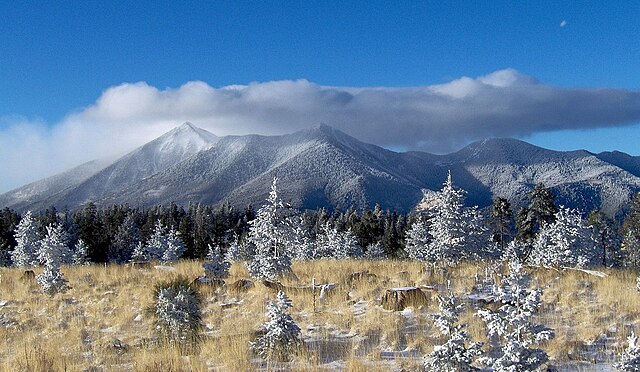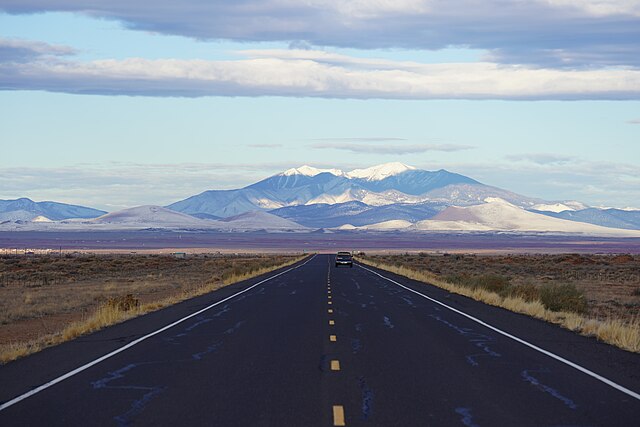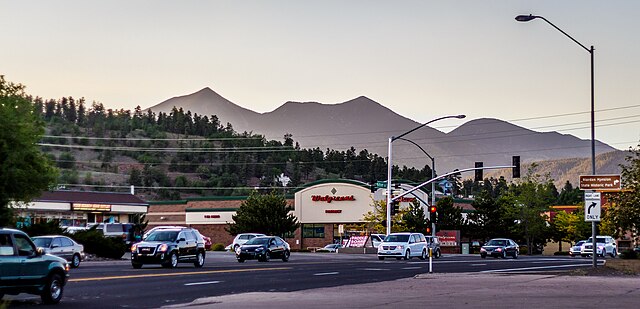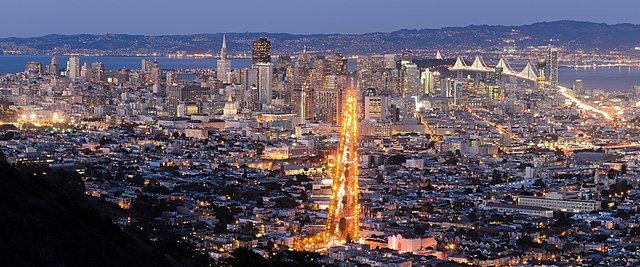Towering majestically above the high desert landscape of northern Arizona, the San Francisco Peaks stand as one of the Southwest’s most spectacular natural landmarks. These ancient volcanic peaks, crowned by Humphreys Peak at 12,633 feet, offer visitors an extraordinary escape from the typical desert imagery associated with Arizona. But what makes this mountain range truly special isn’t just its impressive elevation – it’s the perfect blend of outdoor adventure, cultural significance, and natural beauty that creates an unforgettable experience for every type of traveler.
Have you ever wondered what it feels like to stand on Arizona’s rooftop? The San Francisco Peaks provide exactly that opportunity, along with world-class hiking, stunning photography opportunities, and a chance to connect with one of the most sacred sites in Native American culture. Whether you’re an experienced mountaineer or a casual nature lover, these peaks offer something extraordinary for everyone.
What Makes San Francisco Peaks Special?
Sacred Significance to Native American Tribes
The San Francisco Peaks hold profound spiritual meaning for twelve Native American tribes, including the Hopi, Navajo, and Havasupai peoples. Known by various names – the Hopi call them Nuva’tukya’ovi, meaning “place of snow on the very top” – these mountains are considered sacred homes to ancestral spirits called kachinas.
This cultural significance runs so deep that the peaks are central to many tribal ceremonies and traditions. The mountain serves as a source of blessing sticks, medicinal plants, and spiritual renewal. When you visit, you’re not just exploring a natural wonder – you’re stepping into a landscape that has been revered for over a thousand years.
Understanding this sacred connection adds depth to your visit. It transforms a simple hiking trip into a more meaningful experience where you can appreciate both the natural beauty and the rich cultural heritage that makes these peaks truly unique in the American Southwest.
Geological Wonder of Northern Arizona
From a geological perspective, the San Francisco Peaks represent the remnants of an ancient stratovolcano that once stood even taller than today’s Humphreys Peak. This massive volcano was active between 1.8 million and 400,000 years ago, creating the dramatic landscape you see today.
The peaks showcase incredible biodiversity due to their elevation range, spanning from 7,000 to over 12,600 feet. This elevation creates what scientists call “life zones” – distinct ecosystems that change as you climb higher. You’ll journey from ponderosa pine forests through mixed conifer forests, eventually reaching the alpine tundra near the summit.
This geological diversity makes the San Francisco Peaks a living laboratory where you can experience multiple climates and ecosystems in a single day. It’s like traveling from northern Arizona to northern Canada without leaving the state!
Location and Getting There
Driving Directions from Major Cities
The San Francisco Peaks are conveniently located just north of Flagstaff, Arizona, making them easily accessible from major southwestern cities. From Phoenix, the drive takes approximately 2.5 hours via Interstate 17 north to Flagstaff, then US Highway 180 northwest toward the peaks.
If you’re coming from Las Vegas, plan for about 4 hours of driving through some of Arizona’s most beautiful high desert country. The route via US-93 south to I-40 east offers spectacular scenery and passes through historic Route 66 towns.
From Albuquerque, the journey takes roughly 4.5 hours westbound on I-40, providing views of the Painted Desert and other geological wonders along the way. The drive itself becomes part of the adventure, with each mile bringing you closer to this mountain paradise.
Best Times to Visit
Timing your visit to the San Francisco Peaks can make or break your experience. Summer months (June through September) offer the most accessible hiking conditions, with warm days and cool nights perfect for camping under star-filled skies.
Fall brings spectacular aspen displays, typically peaking in late September to early October. The golden aspens create a stunning contrast against the evergreen forests and blue skies – it’s arguably the most photogenic time of year.
Winter transforms the peaks into a snowy wonderland, perfect for skiing and snowboarding at Arizona Snowbowl. However, high-elevation trails become inaccessible due to snow, making this season ideal for lower-elevation activities and winter sports rather than peak hiking.
Spring can be unpredictable, with lingering snow at higher elevations but beautiful wildflower displays in the lower zones. If you’re flexible with your dates, spring offers fewer crowds and mild weather for exploring the foothills.
Hiking Trails and Outdoor Adventures

Humphreys Peak Trail: Conquering Arizona’s Highest Point
The crown jewel of San Francisco Peaks hiking is undoubtedly the Humphreys Peak Trail. This challenging 10-mile round-trip hike takes you to the highest point in Arizona, offering panoramic views that stretch to the Grand Canyon, Sedona’s red rocks, and beyond.
The trail begins at the Arizona Snowbowl parking area and immediately challenges hikers with a steady climb through beautiful aspen groves. As you ascend, you’ll notice the dramatic changes in vegetation – from mixed conifer forests to the sparse alpine environment near the summit.
What makes this hike truly special isn’t just the destination, but the journey itself. You’ll cross several distinct ecological zones, each with its own unique character. The final push to the summit crosses above treeline, where the landscape becomes almost otherworldly with its rocky terrain and expansive views.
Trail Difficulty and What to Expect
Don’t underestimate the Humphreys Peak Trail – it’s a serious mountain hike that demands respect and preparation. The trail gains approximately 3,300 feet in elevation over 5 miles, making it a strenuous workout even for experienced hikers.
The thin air at high altitude affects everyone differently. You might find yourself breathing harder than usual, especially if you’re coming from sea level. Take your time, drink plenty of water, and listen to your body. There’s no shame in taking breaks – the views from every rest stop are spectacular.
Weather can change rapidly at this elevation. Even on warm summer days, temperatures near the summit can be surprisingly cool. Afternoon thunderstorms are common during monsoon season (July-September), so an early start is crucial for safety.
Essential Gear and Safety Tips
Proper preparation is absolutely essential for a successful Humphreys Peak adventure. Start with sturdy hiking boots that provide ankle support on the rocky terrain. Layers are crucial – temperatures can vary dramatically between the trailhead and summit.
Pack more water than you think you need. The dry air and elevation increase dehydration risk significantly. A good rule of thumb is one liter per person for every two hours of hiking, plus extra for emergencies.
Don’t forget sun protection – the UV exposure at high altitude is intense. Sunscreen, sunglasses, and a hat are non-negotiable. A first aid kit, headlamp, and emergency shelter should round out your safety gear.
Inner Basin Trail: A Scenic Alternative
For those seeking beauty without the extreme challenge of Humphreys Peak, the Inner Basin Trail offers a perfect alternative. This moderate 3-mile round-trip hike provides access to the heart of the volcanic caldera, where you’ll find some of the most beautiful aspen groves in Arizona.
The trail follows an old road through the interior of the ancient volcano, creating a unique hiking experience. You’re literally walking inside what was once a massive volcanic crater, surrounded by towering peaks on all sides.
Fall is absolutely magical here, when thousands of aspens turn brilliant gold and yellow. The contrast between the white aspen trunks, golden leaves, and dark volcanic rock creates a photographer’s paradise. Even in summer, the cool shade and gentle streams make this a refreshing escape from desert heat.
Kachina Trail: Perfect for Beginners
The Kachina Trail provides an excellent introduction to the San Francisco Peaks without the extreme elevation gain of other trails. This relatively flat 6-mile loop circles the base of the peaks, offering constantly changing perspectives of the mountain range.
What sets the Kachina Trail apart is its accessibility and diversity. The trail passes through beautiful ponderosa pine forests, crosses seasonal streams, and provides numerous viewpoints without requiring technical hiking skills. It’s perfect for families with children or anyone wanting to experience the peaks without the physical demands of summit hiking.
The trail also offers excellent wildlife viewing opportunities. Keep your eyes open for elk, deer, and various bird species that call these forests home. The diverse plant life along the trail provides educational opportunities for nature enthusiasts of all ages.
Wildlife and Flora of San Francisco Peaks

Unique Ecosystems at Different Elevations
The San Francisco Peaks function as a biological island, supporting ecosystems typically found hundreds of miles to the north. This elevation-driven diversity creates habitats for species that couldn’t survive in the surrounding desert environment.
At lower elevations, you’ll find classic Southwest ecosystems dominated by ponderosa pines, their distinctive vanilla-scented bark and towering trunks creating park-like forests. As you climb higher, Douglas fir and white fir join the mix, creating dense, cool forests that feel more like Colorado than Arizona.
The highest elevations support alpine tundra plants that are found nowhere else in Arizona. These hardy species have adapted to extreme conditions – short growing seasons, intense UV radiation, and dramatic temperature swings. Some of these plants are found only on the San Francisco Peaks, making them truly unique.
Best Wildlife Viewing Opportunities
Wildlife viewing in the San Francisco Peaks can be extraordinary, especially during dawn and dusk when animals are most active. Elk are perhaps the most impressive residents, with herds sometimes numbering in the hundreds during winter months when they descend from higher elevations.
Mule deer are common throughout the area, often seen grazing in meadows or crossing trails. Black bears also call these mountains home, though they’re rarely seen due to their elusive nature. If you’re lucky, you might spot a turkey, porcupine, or even a mountain lion track.
Bird watching is exceptional here, with species ranging from common mountain birds like Steller’s jays and Clark’s nutcrackers to rare high-elevation specialists. The diversity of habitats means you might see desert species at lower elevations and true mountain birds near the peaks.
Seasonal Activities and Attractions
Summer Adventures: Hiking and Camping
Summer transforms the San Francisco Peaks into an outdoor adventure paradise. The snow-free trails open up hiking opportunities to every corner of the range, from gentle nature walks to challenging peak ascents.
Camping is particularly rewarding during summer months. The high elevation provides cool nighttime temperatures that offer relief from the desert heat below. Clear skies and minimal light pollution create perfect conditions for stargazing – the Milky Way is often visible to the naked eye.
For families, summer offers the best conditions for introducing children to mountain hiking. The moderate temperatures and longer daylight hours provide safe, comfortable conditions for building outdoor skills and confidence.
Fall Colors: Aspen Viewing Guide
Fall in the San Francisco Peaks is nothing short of spectacular. The aspen forests explode in brilliant gold and yellow, creating one of the Southwest’s most impressive autumn displays. Unlike many fall color destinations, the San Francisco Peaks offer this beauty at a comfortable elevation and temperature.
The best viewing typically occurs from late September through early October, though timing can vary with weather conditions. The Inner Basin Trail provides the most concentrated aspen viewing, while the Kachina Trail offers extended opportunities to experience the changing colors.
Photography enthusiasts will find endless opportunities during fall. The contrast between golden aspens, dark evergreens, and bright blue skies creates stunning natural compositions. Early morning and late afternoon light make the colors particularly vibrant.
Winter Sports: Arizona Snowbowl
Winter brings a completely different character to the San Francisco Peaks. Arizona Snowbowl, the state’s premier ski resort, transforms the mountain into a winter sports destination that surprises visitors who don’t expect serious snow in Arizona.
The resort offers downhill skiing and snowboarding on runs that provide views of the Painted Desert and Grand Canyon – where else can you ski while looking at desert landscapes? The season typically runs from December through March, depending on snowfall.
For those preferring non-mechanized winter activities, snowshoeing and cross-country skiing provide peaceful ways to experience the winter landscape. The snow-covered aspens and frosted evergreens create a magical winter wonderland that rivals any mountain destination.
Photography and Scenic Viewpoints
Best Instagram-Worthy Spots
The San Francisco Peaks offer countless photography opportunities, but certain locations stand out for their Instagram-worthy appeal. The Humphreys Peak summit provides the ultimate panoramic shot, with views extending to the Grand Canyon and beyond on clear days.
The Inner Basin during fall offers some of the most colorful compositions in the Southwest. The golden aspens create natural frames and leading lines that make for compelling photographs. Even amateur photographers can capture professional-quality images here.
Don’t overlook the view from below – the peaks themselves create dramatic backdrops for foreground subjects. Wildflower meadows in summer, snow-covered scenes in winter, and golden aspens in fall all provide opportunities for stunning landscape photography.
Sunrise and Sunset Photography Tips
The high elevation and clear air of the San Francisco Peaks create exceptional conditions for sunrise and sunset photography. The key is planning your location based on the season and desired composition.
For sunrise photography, eastern-facing slopes provide the first light, while the peaks themselves create dramatic silhouettes. Summer offers the earliest sunrise times, while winter provides more colorful displays due to atmospheric conditions.
Sunset photography works best from western viewpoints, where you can capture the peaks backlit against colorful skies. The Arizona Snowbowl area provides excellent sunset viewing opportunities, with the added benefit of easy access and parking.
Nearby Attractions and Day Trips
Flagstaff: Gateway to the Peaks
Flagstaff serves as the perfect base camp for exploring the San Francisco Peaks. This charming mountain town offers everything from historic downtown districts to world-class astronomical observatories.
The Lowell Observatory, where Pluto was discovered, provides fascinating insights into astronomy and space science. The high altitude and clear skies make Flagstaff a premier destination for stargazing and astronomical research.
Downtown Flagstaff offers excellent dining, shopping, and cultural attractions. The combination of college town energy (Northern Arizona University is located here) and mountain town charm creates a unique atmosphere that complements your peaks adventure.
Grand Canyon South Rim Connection
The San Francisco Peaks’ location makes them an excellent addition to a Grand Canyon itinerary. The South Rim is only about 90 minutes away, allowing you to experience both Arizona’s highest point and its most famous natural wonder in a single trip.
This combination showcases Arizona’s incredible geological diversity – from ancient volcanic peaks to one of the world’s most spectacular canyons. The elevation change between the peaks and the canyon provides dramatically different ecosystems and experiences.
Many visitors use this combination to create a comprehensive northern Arizona adventure, adding stops at Meteor Crater, Walnut Canyon, or Sunset Crater for a complete geological tour.
Planning Your Visit: Practical Information
Permits and Regulations
Most hiking in the San Francisco Peaks doesn’t require permits, but it’s important to understand the regulations that protect this special place. The peaks are managed by the Coconino National Forest, which has specific rules about camping, fires, and group activities.
Camping is allowed in designated areas only, and campfires may be restricted during high fire danger periods. Group size limits apply to protect the fragile alpine environment, particularly above treeline.
Some areas may have seasonal closures to protect wildlife during sensitive periods like nesting season. Always check current conditions with the Forest Service before your visit to ensure you’re following all applicable regulations.
Where to Stay and Dine

Flagstaff offers the most comprehensive lodging and dining options for San Francisco Peaks visitors. From budget motels to luxury mountain lodges, the city provides accommodations for every budget and preference.
For a more rustic experience, camping is available in several Forest Service campgrounds around the peaks. These offer a chance to sleep under the stars and wake up in the heart of the mountains.
Dining options range from casual hiking fuel stops to fine dining restaurants featuring local ingredients. Many establishments cater specifically to outdoor enthusiasts, offering early breakfast hours and trail-friendly packed lunches.
Respecting the Sacred Mountain
Cultural Sensitivity Guidelines
Visiting the San Francisco Peaks comes with the responsibility to respect their sacred significance to Native American tribes. This means more than just following Leave No Trace principles – it requires cultural sensitivity and awareness.
Avoid disturbing any objects that might have ceremonial significance, including prayer ties, offerings, or ceremonial items. Don’t remove anything from the mountain, including rocks, plants, or other natural materials that might have spiritual importance.
Photography should be done respectfully, avoiding any areas that might be used for ceremonies or that contain sacred objects. When in doubt, err on the side of caution and respect.
Leave No Trace Principles
The Leave No Trace principles are especially important in the San Francisco Peaks due to their ecological sensitivity and cultural significance. Pack out all trash, stay on designated trails, and avoid disturbing wildlife.
The alpine environment above treeline is particularly fragile. Plants that might take decades to grow can be destroyed by a single footstep. Always stay on trails and avoid shortcuts that can cause erosion.
Water sources should be protected by camping and washing at least 200 feet away from streams and lakes. The high elevation environment processes contamination slowly, so even small impacts can have lasting effects.
Conclusion
The San Francisco Peaks offer an extraordinary opportunity to experience Arizona’s highest and most sacred mountains. Whether you’re seeking the challenge of summiting Humphreys Peak, the beauty of fall aspens, or the spiritual connection of walking on sacred ground, these peaks provide experiences that will stay with you long after your visit.
From the diverse ecosystems and wildlife viewing opportunities to the world-class hiking and photography possibilities, the San Francisco Peaks represent the very best of what Arizona’s high country has to offer. The combination of natural beauty, cultural significance, and outdoor adventure creates a destination that appeals to every type of traveler.
As you plan your visit, remember that you’re not just exploring a mountain range – you’re entering a landscape that has been revered for centuries and continues to provide inspiration, challenge, and renewal for all who visit respectfully. The San Francisco Peaks are truly one of the Southwest’s greatest treasures, waiting to be discovered and appreciated by those who seek adventure in Arizona’s sacred mountains.
Frequently Asked Questions
Q: What’s the best time of year to hike Humphreys Peak? A: The best time is typically July through September when the trail is snow-free and weather conditions are most stable. Early morning starts are recommended to avoid afternoon thunderstorms during monsoon season.
Q: Do I need any special permits to visit the San Francisco Peaks? A: No special permits are required for day hiking or most activities. However, you should check with the Coconino National Forest for current regulations regarding camping, group activities, and any seasonal closures.
Q: How difficult is the Humphreys Peak hike for beginners? A: The Humphreys Peak trail is considered strenuous and not recommended for beginners. The Kachina Trail or Inner Basin Trail are better options for those new to mountain hiking. The elevation gain and thin air make Humphreys Peak challenging even for experienced hikers.
Q: Are there any cultural restrictions I should know about when visiting? A: Yes, the San Francisco Peaks are sacred to many Native American tribes. Visitors should respect any ceremonial items they encounter, avoid removing anything from the mountain, and be mindful that they’re visiting a place of deep spiritual significance.
Q: What wildlife might I see during my visit? A: Common wildlife includes elk, mule deer, wild turkeys, and various bird species. Black bears are present but rarely seen. The best wildlife viewing occurs during dawn and dusk hours when animals are most active.

